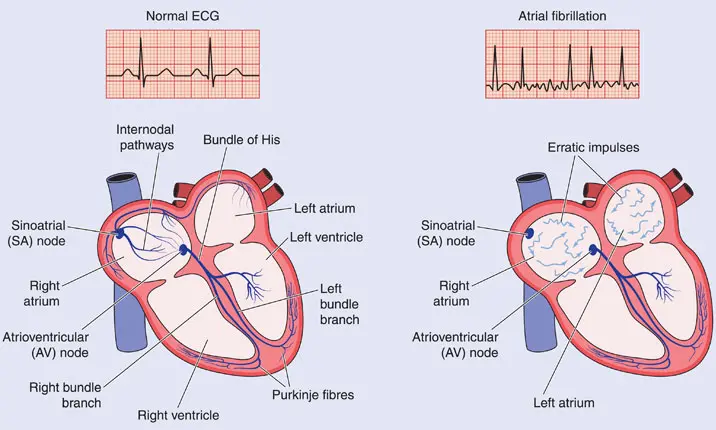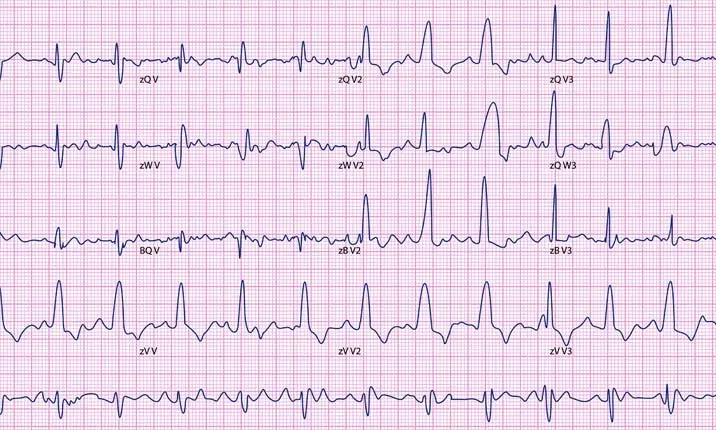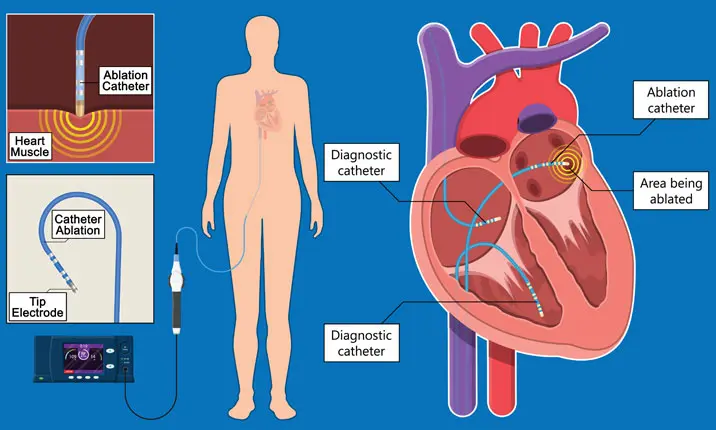What is an electrophysiology study?
An electrophysiology study (EPS) is a minimally invasive test a heart rhythm specialist performs to understand the nature of your abnormal heart rhythm, also known as arrhythmia, and to determine the best course of action to treat the condition. It accomplishes this by testing the electrical activity of your heart to determine which part of your heart the abnormal rhythm is coming from. Once the diagnosis is made, definite treatment by catheter ablation (cauterisation or 'lasering') is often performed during the same procedure.
What is arrhythmia?
Your heart relies on organised electrical impulses to keep it beating in a regular rhythm. Arrhythmia occurs when these electrical impulses do not behave normally, resulting in an abnormal heart rhythm. As a result, your heart can beat too fast, too slow or with an irregular rhythm.
Symptoms of arrhythmia
Though some patients do not experience any symptoms, arrhythmia can sometimes cause:
- Discomfort, pain, or pounding in your chest
- Shortness of breath
- Excessive sweating
- Giddiness or even fainting
Types of arrhythmia
There are many different types of cardiac arrhythmias ranging from the completely benign to life-threatening. Arrhythmias can be categorised in different ways but it is commonly classified in 2 principal ways:
- The part of your heart the arrhythmia originates from:
- Upper chambers – supraventricular arrhythmias
- Lower chambers – ventricular arrhythmias
- The speed of heart rate the arrhythmia is causing:
- Too fast – tachycardia
- Too slow – bradycardia
Supraventricular arrhythmia
This type of arrhythmias can cause uncomfortable symptoms for patients. While it generally doesn’t cause any dramatic events such as sudden cardiac death, the most common type of supraventricular arrhythmias, atrial fibrillation can lead to stroke.
Ventricular arrhythmia
This is a type of arrhythmia that can stop your heart from beating, leading to cardiac arrest. This happens when the irregular heart rhythm prevents oxygen-rich blood in the ventricles from circulating to the brain and body. The ventricles are the heart's main pumping chambers, and the majority of the potentially lethal arrhythmias are ventricular in origin.
Tachycardia
When the heartbeat is under normal control, it is referred to as sinus rhythm. When in sinus rhythm the heart's natural pacemaker controls the rhythm. Hormones and nervous system of the body can affect this pacemaker. Tachycardia happens when your heart is beating too fast. The average adult heart beats 60 – 100 times per minute. Tachycardia is defined as heart rate over 100 times per minute.
Bradycardia
Bradycardia occurs when electrical signals in your heart become disrupted, causing a slow heart rate of less than 60 beats per minute. What's considered too slow can depend on your age and physical condition. Elderly people, for example, are more prone to bradycardia.
How can I prepare for an electrophysiology study?
There are a few steps you can take to prepare yourself for EPS. The more general preparation, as with all medical procedures, include:
- Fasting for 6 – 7 hours before the test
- Informing your doctor about any medications you take
- Wearing your hearing aid or glasses to the appointment if you usually wear them
- Arranging for someone to drive you home after the test
How is an electrophysiology study performed?
The whole procedure, usually lasting for 1 – 4 hours, can be broken down into 6 steps.
Step 1: A nurse will insert an intravenous line (IV) into your arm, sedating you. However, you will be awake and able to follow instructions during the test.
Step 2: A nurse will clean and shave the part of your body where the doctor will be performing the procedure.
Step 3: You will be administered local anaesthesia to numb the area. Your doctor will make a needle puncture through your skin and into your blood vessel. A small tube will be inserted into your artery or vein. Your doctor will gently guide several specialised EP catheters into your blood vessel through the tube and advance them to your heart.
Step 4: Your doctor will send small electric pulses to your heart to make it beat at different speeds.
Step 5: The electric signals produced by your heart will be recorded, allowing the doctor to locate the origin of the arrhythmia.
Step 6: Once the source of the arrhythmia is determined, your doctor will usually go on to treat the arrhythmia with catheter ablation using the same access. After the ablation is completed, the catheters and the IV line are removed. A nurse will apply pressure onto the puncture site to stop any bleeding.
What happens after an electrophysiology study?
Once the entire procedure is completed, you will be moved into a recovery room where you will rest for 1 – 3 hours. EPS is done as a day procedure, so you will be able to go home as soon as the sedative wears off.
If you notice a sudden increase in swelling around the puncture site, or bleeding that does not slow down when you press hard on the site, or if the arm or leg that was used for the procedure feels numb, cold or is changing in colour, seek medical attention immediately.















